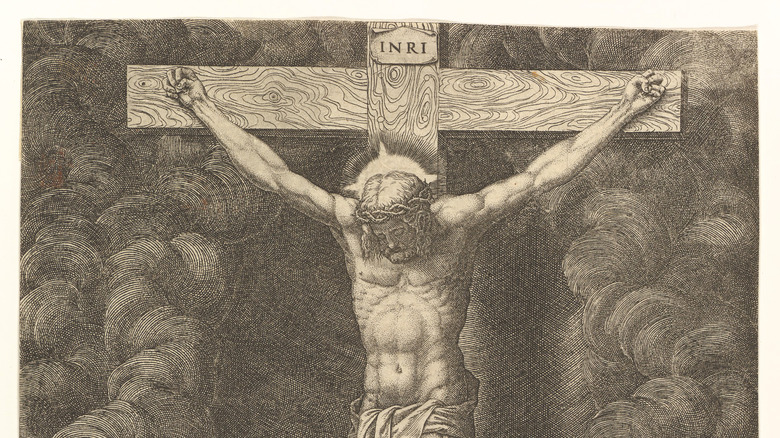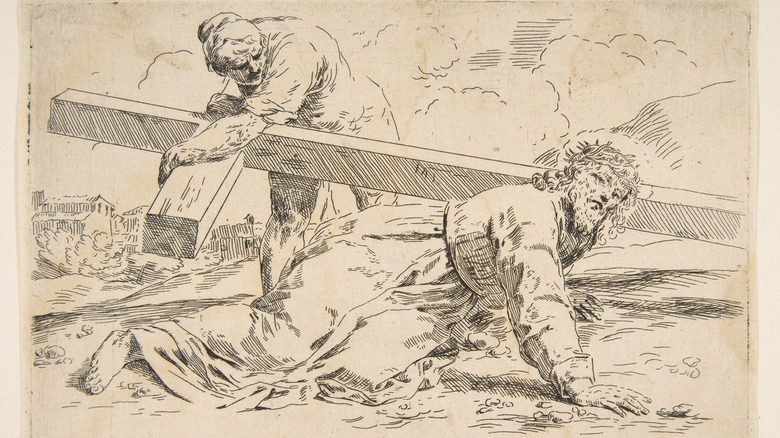What Really Happened To Jesus' Cross?
Christianity is, in some regards, a religion that is concerned with relics: objects, such as jewels or bits of cloth, or even parts of the human anatomy, that are in some way connected to an important person or event in the religion's history are revered. Many Christian sites across the world have such relics, and indeed, in some cases, they're tourist attractions. For example, as Atlas Obscura notes, at the Basilica San Domenico in Siena, Italy, you can see what is purported to be the severed and preserved head of Saint Catherine of Siena. You could also check out her thumb if you were so inclined.
One set of relics that Christendom has been concerned about for millennia is the very cross on which Jesus Christ was nailed and left to die. Known as the "True Cross," bits of it are purportedly in Catholic shrines all across the world, including at the Church of the Holy Sepulchre in Jerusalem and the Basilica of the Holy Cross in Rome, according to the National Catholic Register.
Unfortunately, the authenticity of these relics, and indeed the whether the True Cross survived at all, is in dispute, and the historical record doesn't exactly mesh with centuries of tradition.
Legend vs. reality
According to some, the True Cross was first discovered around 326 A.D. As the Catholic Education Resource Center notes, that's when St. Helena, mother of Christian emperor Constantine, supposedly made a pilgrimage to Jerusalem and found the object.
From there, hundreds of years of history saw various churches in Europe and across the world coming into possession of bits and pieces of wood that supposedly came from the True Cross. Indeed, by the 16th century, as the National Catholic Register notes, skeptics were claiming that there were enough purported pieces of the true cross to build a ship, a claim that the website asserts was disproven via an inventory of all of those pieces not in private hands.
However, there's an even larger problem, according to the Daily Beast. Namely, it's that the records attributing the finding of the True Cross to Helena are unreliable at best. Further, for the first few centuries of Christianity, the cross was just a non-issue; as a tool for punishing slaves and criminals, it was a source of embarrassment, not pride, for early Christians. It's possible that it was reused for later crucifixions or simply destroyed.

